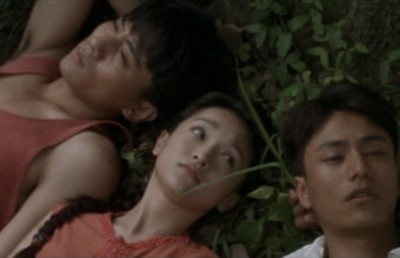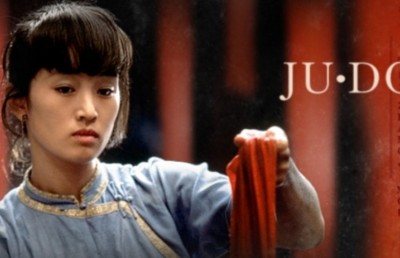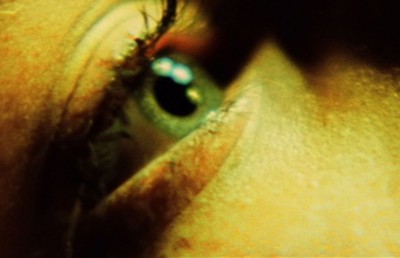The White Countess: Merchant and Ivory’s Final Film
Dreamers and Realists
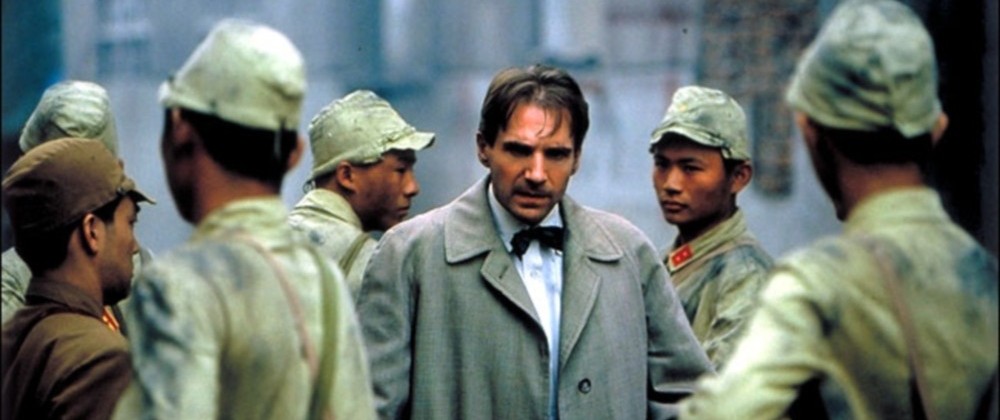
While the works of Powell and Pressburger tended towards formalistic fables and fairy tales, their compatriots Merchant and Ivory were an auteur twosome synonymous with sumptuous period films about civilized Westerners. James Ivory’s The White Countess (2005) is no exception despite its Far East setting. For this reviewer, the excitement in a Merchant and Ivory film lies not in their lavishly costumed productions, but in the fleeting impressions of humanity they create from within a stolid exterior; in drama, emotions from the least obvious source is infinitely more gratifying. Therefore, their films are not for everyone, especially moviegoers conditioned to expect more apparent displays of character needs and central conflicts. To watch a Merchant-Ivory film is to commit to, at the very least, acquire a taste for impassive characters.
Nevertheless, the films of Merchant and Ivory are not uncinematic. Their period design sets the mood of remembered pasts, while their characters’ lack of anticipated action/reaction creates screenplay tension of a more profound nature; theirs is an atypical cinema about people who show and tell the least. Further, they are no strangers to genre with films such as A Room with a View (1985), a delightful period romantic comedy, and The Remains of the Day (1993), a devastating character study within a historical setting. The White Countess, their final film, follows a familiar structure: the romance picture. The film’s two lead characters appear prominently in passionate embrace in one of the film’s advertising posters: a dispossessed American diplomat, Todd Jackson (Ralph Fiennes), seemingly in search of an incarnation of Rick’s Café Américaine from MGM’s Casablanca (1942), and a Russian aristocrat in exile, Countess Sofia Belinskya (Natasha Richardson). Though they share a common familiarity with tragedy and eventually form a symbiotic bond, they are broken beyond the consolation of love. The White Countess is a high-brow romance drama without romantic love.
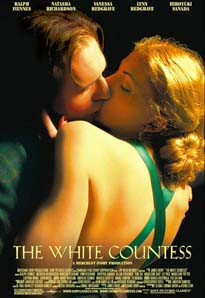
Upon initial viewing, the lead characters’ actions suggest the impractical ideals of romantics. However, upon reflection, I find that they do not idealize as much as they dream about their perfect place: Todd Jackson, his Shanghai bar and Sofia Belinskya, her old Russian aristocracy. The film opens with a dream-like vestibule of formal dancers waltzing in a snow flurry as the film credits roll. This highly-stylized sequence, constructed with sepia colors and distorted film time-motion, suggests Sofia’s dream of her heyday in royal splendor. The audience is invited to James Ivory’s theatre of dreamers: characteristically stolid, nostalgic, and universal in theme.
The film begins with an exposition on Sofia: she works in a red light district of pre-WWII Shanghai to provide for her family of former aristocrats, including her beloved daughter Katya (Madeleine Daly), a bright light in their bleak ghetto dwelling. On the other side of the tracks, Todd is an upper-class foreigner who has self-consciously outlasted his heyday as an ambassador of hope to China; he now barricades his regrets of outliving his family behind the veil of absent-minded, bar-hopping recreations and daydreams. Their worlds meet in casual encounters when employee and patron become privy to one another’s circumstances through several forms of eavesdropping, a natural occurrence to the attentive in a public house setting. With a consenting Sofia as his “centerpiece,” Todd creates a swanky “dancing bar” called “The White Countess,” a manifestation in his mind as intense as Andre Bazin’s “myth of total cinema.”
Shanghai in the 1930s did not invite dreamers. Prior to the Japanese invasion –one of several– the political unrest in urban China existed amid sustained conflicts between the then-dominant nationalist party the Kuomintang (KMT) and the Communist Party of China (CPC). Todd and Sofia were both presented with opportunities to improve their situations and leave Shanghai for relative safety, but both never acted sensibly until their final meeting at the film’s conclusion. Todd had become a relic in his political endeavor but he remains in Shanghai in the midst of the mounting army from Japan, and recklessly befriends a ubiquitous Japanese gentleman with whom he shares a taste for low-brow theatre. On the other hand, Sofia, with her continual courage to earn a living could have found a means to escape their ghetto with the innocent Katya in tow. Furthermore, the common excuse of romance in comparable genre films is absent here, for our lead characters are chaste.
The narrative’s vague promise of romance never consummates, merely implied through intimate but platonic contact. The White Countess gives us two wretched dreamers who, individually, could not overcome the images they subconsciously project. Figuratively speaking, they are fanatics of the films in their minds, particularly the afflicted Todd. On the narrative surface, he shields his dispossessions through conceptual beauty only to finally emerge in the final hour from his hollow shell to re-engage life, but underneath, we sense the perversity of his subconscious enterprise. Blind and regressed to dream-fulfillment, Todd’s handicapped bodily movement and his pleasure in self-generated images seem to correlate with cinema itself. On the other side, Sofia’s images are more palatable; her mental projections of a childhood friend now reduced to menial labor in Shanghai kitchens illicit audience sympathy. However, despite our identification with her nostalgia, Sofia’s willingness to be abandoned by her family is clearly self-destructive.
Of the two, Todd is by far the more gravely lost soul. His execution of “the bar of my dreams” with the aid of two partners, reveals the depth of his methodical but corrupt path. In Matsuda (Hiroyuki Sanada), he finds camaraderie and an intellectual connection, like the harmonious meeting of minds between a keen student and a college professor; they jointly formulate the “myth of the perfect bar” while Todd hosts the images. Then, Sofia provides the film equivalent of method acting and sets the mood of Todd’s reconstruction. With the writing and staging allocated, Todd obtains the final ingredients of financing and producing at the racetrack. In this complex sequence where his small but adequate fortune is blindly placed on a horse, Todd’s behaviour reveals the embodiment of his central conflict.
In the racetrack sequence, the first major turning point of the story, he is seen shadow-jockeying in a rather perverse posture, even for an unself-conscious man, seemingly engaged in the race. However, at the instant of winning, his expression and body language indicate neither thrill nor joy. Later, upon chance meeting Matsuda at the track, Todd’s mood shifts suddenly to a celebratory gesture with his straw hat and a burst of laughter. He’s well again, now that his winnings are put in the context of “the bar of my dreams,” forgetting all its associations with the chaotic world to which the horse race belongs. Todd’s perversion will not evaporate until the end of Act 3, in a highly-stylized scene where his images are razed to oblivion.
While he finally frees himself from his “Casablanca dreams” after proposing dispassionately to Sofia, “I think we can help one another,” Sofia’s escape from a traumatic fate is induced only by external forces. Left behind by her family like a severed limb in urgent self-preservation, she weeps in isolation until a friendly voice moves her to action. Her character is defined by that tendency to succumb to her idealization of her lineage; she subjects herself to “dirty” work in public houses to sustain her family despite their willingness to cut her off. Sofia’s idyllic memories of her past shows an instinct for happiness, however, she remains servile to those images of the good old way.
Nevertheless, Kazuo Ishiguro’s script offers more than a nihilistic portrait of two very impractical people. Opposite Todd Jackson is Matsuda, a fierce dreamer in his own right, a Japanese nationalist who realizes the grand vision of his beloved country. While the politically impotent Todd attempts to escape his chaotic reality, Matsuda engineers his “broader canvas” for imperialist Japan. Matsuda is a counterpoint to the metaphorically blind Todd just as Aunt Vera (Vanessa Redgrave) and Uncle Peter (John Wood) provide a realist counterpoint to a self-abnegating Sofia. At the center of the screenplay, with its historically turbulent backdrop, is a stage for the drama of dreamers versus realists.
So, how do you conclude such a dialectical drama? Wouldn’t the story find a more gratifying ending with the catharsis of acknowledged love for our two protagonists, like with Rick and Ilsa in Casablanca? There is a scene that approaches this climax, when Todd “sees” Sofia’s face with his hands, but it goes no further than this respectable physical contact, this courtesy for the blind man. Instead of utilizing the romantic love angle, Ishiguro ties the loose ends with a minor character, Katya.
The key to The White Countess, its ideology, is revealed after Katya looks into several sepia-toned plate glass pictures at the docks to Soo Chow. Her imagination sparks an animated sequence that prominently features three major elements: a lead musician producing an oboe-sounding tune, a harmonious three-member family, and a phoenix. Katya’s a dreamer too, and a pure dreamer at that. The approximate realization of her impressionistic images is the final scene where she looks up at the trumpeter during the exodus to Macau with Todd and Sofia, her new family dynamic. The new family prospers after all, as the phoenix prophesied, and they have a Chinese equivalent of a “happily ever after” ending.
Looking past our damaged protagonists who appear beyond love and happiness, Ishiguro offers hope for their next generation in Katya and her optimistic images. Despite the recurring form of the phoenix, a decidedly Chinese icon, the hope in Katya is a universal sentiment shared by parents the world over. With such an uplifting final message, The White Countess escapes movie categories except the label of a Merchant-Ivory auteur film. This is one of Merchant-Ivory’s more assessable films.




